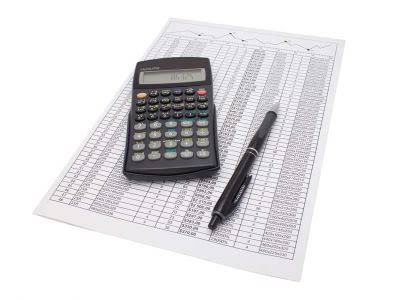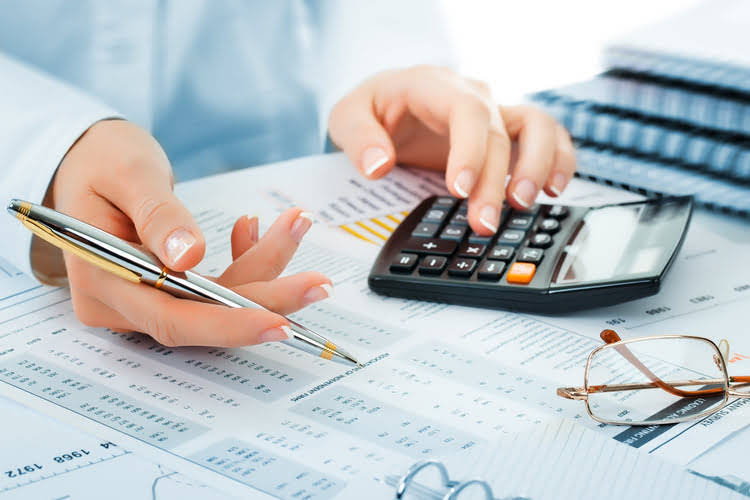
Charlene Rhinehart is a CPA , CFE, chair of an Illinois CPA Society committee, and has a degree in accounting and finance from DePaul University. In regression analysis, the difference between the observed value of the dependent variable and the predicted value is called the residual. It is the anticipated value https://www.bookstime.com/articles/sole-trader-bookkeeping of the asset, considering elements such as depreciation, age-related deterioration, and becoming outdated. Salvage value is the projected worth of an asset when it has completed its useful cycle or is no longer being utilized. You get it by adding up the value it has lost yearly for as long as you have owned it.
- Calculate the annual depreciation rate by dividing 1 by the useful life in years.
- In the field of mathematics, specifically in regression analysis, the residual value is found by subtracting the predicted value from the observed or measured value.
- Have your business accountant or bookkeeper select a depreciation method that makes the most sense for your allowable yearly deductions and most accurate salvage values.
- Understanding this concept is important as it helps organizations make informed decisions regarding the purchase of an asset, the sale of an asset, and its rehauling.
- For companies, assets are things of value that sustain growth and production.
Calculations for Residual Value
Now, let us dive into our second commonly used method to calculate this concept. The most important factors to consider are the circumstances and the goal of the valuation. Decide which method fits best by looking at the picture and determining what resources are available and ready to use. The concept of salvage value plays a crucial role for institutions in various aspects of financial management and decision-making.
A Step-by-Step Guide to Calculating an Asset’s Salvage Value

This difference in value at the beginning versus the end of an asset’s life is called “salvage value.” Perhaps the most common calculation of an asset’s salvage value is to assume there will be no salvage value. As a result, the entire cost of the asset used in the business will be charged to depreciation expense during the years of the asset’s expected useful life. One of the first things you should do after purchasing a depreciable asset is to create a depreciation schedule. Through that process, you’re forced to determine the asset’s useful life, salvage value, and depreciation method. Let’s figure out how much you paid for the asset, including all depreciable costs.

Salvage Value Calculator

If the scrap value is too high, it might adversely impact the company since there would be an understating of depreciation and overstating of the net income. Furthermore, the balance sheet would show an overstated value of fixed assets and their earnings. In contrast, when the scrap value is set too low, the net income could be understated, and the depreciation may be overstated. There’s also something called residual value, which is quite similar but can mean different things.
It is the value a company expects in return for selling or sharing the asset at the end of its life. Resale value is a similar concept, but it refers to a car that has been purchased, rather than leased. So resale value refers to the value of a purchased car after depreciation, mileage, and damage.

For investments, the residual value is calculated as the difference between profits and the cost of capital. The residual value, also known as salvage value, is the estimated value of a fixed asset at the end of its lease term or useful life. In lease salvage value formula situations, the lessor uses the residual value as one of its primary methods for determining how much the lessee pays in periodic lease payments. As a general rule, the longer the useful life or lease period of an asset, the lower its residual value.
- The carrying value of an asset as it is being depreciated is its historical cost minus accumulated depreciation to date.
- Therefore, the DDB method would record depreciation expenses at (20% x 2) or 40% of the remaining depreciable amount per year.
- Resale value is a similar concept, but it refers to a car that has been purchased, rather than leased.
- If there’s no resale market for your asset, it likely has a zero salvage value.
- There may be a little nuisance as scrap value may assume the good is not being sold but instead being converted to a raw material.
- When businesses buy fixed assets — machinery, cars, or other equipment that lasts more than one year — you need to consider its salvage value, also called its residual value.
- While Salvage Value forecasts an asset’s worth at the twilight of its functional life, other values like Market and Residual give context to its worth in varying scenarios.
The Internal Revenue Service (IRS) uses a proprietary depreciation method called the Modified Accelerated Cost Recovery System (MACRS), which does not incorporate salvage values. Salvage value is the amount a company can expect to receive for an asset at the end of the asset’s useful life. A company uses salvage value to estimate and calculate depreciate as salvage value is deducted from the asset’s original cost. A company can also use salvage value to anticipate cashflow and expected future proceeds.
Salvage Value Depreciation Equation
- It’s the amount a company thinks it will get for something when it’s time to say goodbye to it.
- For tax purposes, businesses are generally required to use the MACRS depreciation method.
- For example, the double-declining balance method suits new cars well since they tend to lose a significant amount of value in the first couple of years.
- For example, consider the value of land owned by a company that only slightly went up in value by the end of its useful life.
- So, in such a case, the insurance company finally decides to pay for the salvage value of the vehicle rather than fixing it.
- The salvage value is considered the resale price of an asset at the end of its useful life.
